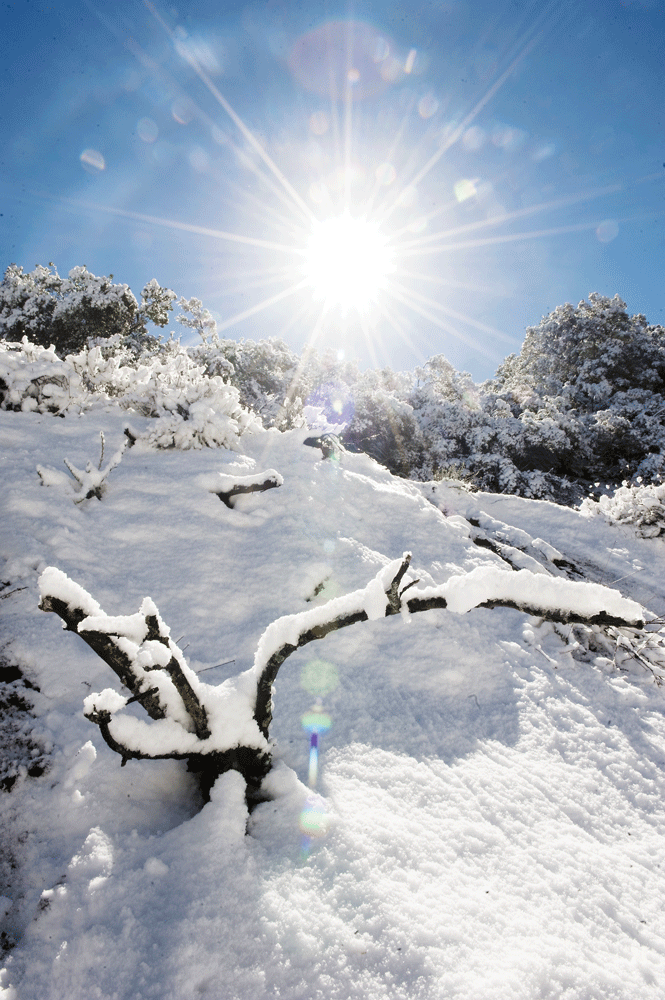As if surviving in the snow isn’t hard enough — with risks including avalanches and freezing to death, among others — imagine losing your eyesight and experiencing pain coupled with uncontrollable eye twitching. These are symptoms of snow blindness, a form of photokeratitis. It’s an eye condition caused by too much exposure to ultraviolet rays. In other words, snow blindness is caused by severe sunburn on your eyes. The sun’s reflection off of ice and snow causes snow blindness because it inflames the cornea, similar to looking at a welder or staring into a black light for too long. Photokeratitis can result from the sun reflecting off of sand and water as well. You can even get photokeratitis from staring at a solar eclipse without protective gear.

Snow blindness commonly occurs atop high mountains where air becomes thinner, providing less protection from UV rays. It’s not just those in snowy areas without protective eyewear who are at risk, but those wearing inadequate eyewear as well. (More on this later.)
Snow blindness can result from as little as half an hour of being in the sun. It may not present itself right away, and sometimes is not apparent until several hours after UV ray exposure. Symptoms include watery, bloodshot eyes that burn and twitch uncontrollably; swelling, which may be so severe the eyes become swollen shut; small pupils; sensitivity to light; a feeling of grit or sand in the eyes; and a headache.
And, as the name suggests, you could go blind. Often vision loss is temporary, but in cases of repeat exposure it can become permanent. According to the Environmental Protection Agency, long-term exposure to UV rays can cause skin cancer around the eyelids and lead to cataracts.
HOW TO SURVIVE
If you’re experiencing snow blindness, get out of the sun. If you wear contact lenses, remove them immediately. If you can, go to a dark room. If not, try to find cover in the shade. Merely closing your eyes may not be enough due to the thin layer of skin on your eyelids.
DON’T RUB YOUR EYES
Instead, cover them. Close your eyes and put a damp, cold washcloth over them to reduce discomfort. Use gauze bandages, eye covers, pads, or anything you can find that will keep light from penetrating the eye area. Also, blackening the skin underneath your eyes, like a pro football player, helps remove some of the reflection.
Relief may also be found by using eye drops or doctor-approved pain relievers and topical solutions.
Many of these treatment options are to alleviate pain, and according to the U.S. Food and Drug Administration most cases of snow blindness go away on their own because the cornea tends to heal itself within 24 to 48 hours. However, those suffering from snow blindness should still consult a doctor as soon as possible.
PREVENTION
Aside from mountain climbers, coldweather sports enthusiasts such as skiers and snowboarders are also at risk if they don’t wear adequate protective eyewear. In addition to donning a sun-blocking hat or visor, other options include wearing UV-absorbent glasses or goggles. But remember, they have to block 99 to 100 percent of UVA/UVB rays and cover the entire eye area, otherwise you’re still at risk.
SUNGLASSES MIGHT NOT BE ENOUGH
Generally, the labels on sunglasses should indicate what protection, if any, is provided. Labels that say “UV absorption up to 400 nm” or “Meets ANSI UV Requirements” indicate the item blocks at least 99 percent of UV rays, according to the American Cancer Society. If a label says “cosmetic,” the sunglasses or goggles will block about 70 percent of UV rays. Wrap-style sunglasses offer better protection than sunglasses that don’t cover all sides of the eye.
Snow or ski goggles with dark or mirrored UV lenses work great because they fit tightly and cover the eye completely. In addition to UV protection, features of snow goggles range from polarized lenses to photochromic lenses that change their tint in response to UV intensity. Mirrored lenses can also be helpful protection.
In addition, glacier goggles offer UV protection and often darker lenses. With any type of glasses or goggles, flexible frames that fit the unique shape of your face are best. Over-the-glass styles exist if you wear glasses and want to put your snow goggles over them. If you wear contacts, some provide protection but not necessarily enough to protect you from snow blindness. Don’t risk it. Always wear protective eyewear.
Make Your Own
In a pinch, you can make your own snow goggles. Some protection is better than no protection. Remember, no matter what kind of makeshift glasses you make, the most important thing is to ensure the amount of light that reaches your eyes is as minimal as possible. Duct tape can be used to make snow goggles. If you’re prepared enough to bring duct tape, chances are you brought glasses or goggles, too. But duct-tape glasses can be used if regular snow goggles have been lost or broken. Duct tape can be handy in a number of survival situations, either way, so packing some in an emergency kit is never a bad idea.







Did You Know?
In addition to causing sunburn, premature aging and skin cancer, tanning lamps and beds can also cause photokeratitis because they emit artificial UV rays, according to the U.S. Food and Drug Administration. Tanning salons typically provide protective eyewear, along with towels that clients can put on their faces, to minimize the risk.
Editors Note: A version of this article first appeared in the March 2015 print issue of American Survival Guide.


